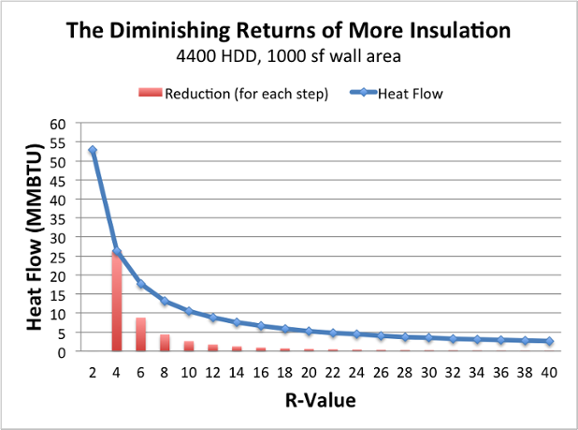So does making 1 foot thick air crete walls make a well insulated efficient house? In a word, Yes. However, you should also consider this. The ability of insulation to slow the transfer of heat into or out of your walls diminish as it gets thicker. So we often have to choose a balance point between perfect 18 inch thick walls and the amount of money required to build thick enough walls.
Consider this chart. It gives you some idea of the relationship between insulation & effectiveness & cost.

You can see from the chart once you get to an R value of 14 the gains really are flattening out.
Now from real world test we have discovered that Air Crete is about 6% less insulating than standard walls with fiberglass insulation. This means we need slightly thicker walls. With that in mind and a goal of creating a house that is cost effective when it comes to heating and cooling I would say that 8 inch thick walls is where I feel efficiency vs value is best. R22 onward is truly questionable in terms of Return on Investment. In other words, the price you pay to build vs the number of years in energy savings it takes to pay back that investment.
Given the choice, 12 inch thick walls are the point that the cost of building vs added insulation value begins breaks towards overly expensive. However, if you build a house at the same price point as conventional construction you could afford an R30 wall for which the conventional house would only have an R13 Value.
I said all that to say this: Build your walls intentionally with purpose. There is no reason to simply guess how thick your walls should be. Design with your goals in mind. Do you want a passive home? Do you want a super low cost of operation for your home. Do you simply want a house that preforms as good as a conventional home?
